| 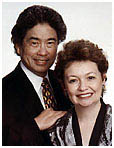 Effective
Teaching...
Effective
Teaching...
by Harry and Rosemary
Wong
June
/ July 2003
Applying for
a Teaching Job in a Tight Market, Part 2
In last month's article, we said, "If you want to succeed as a teacher, there are two questions you must ask during your job interview."
- Does the district have a new teacher induction program?
- Does the district have a curriculum guide that is aligned to state standards?
We answered the first question last month, leaving the second question for this month. Last month we talked about our goddaughter, because we told her to start her teaching career at the Lafourche Parish schools near New Orleans. We told her that the Lafourche schools have an organized, three-year induction program that will train, support, and retain her. In the 2000-2001 school year, they lost only one teacher out of the 46 they hired and all of their teachers passed the Louisiana State Teachers Assessment test. What a wonderful way to begin a career!
Therefore, in an interview, ask if the district has a formalized induction program. Ask how long the program runs. Most importantly, ask what is the attrition rate of their new teachers. Low attrition means the teachers are staying. If teachers are staying, that means they are succeeding in the classroom!
Before we answer the second question, we know that many of you are nearing the end of the school year and are preparing for the summer. We'd like to tell you how one teacher does it.
She stores boxes under her sink over the summer. Stacey Allred has been teaching for eight years in Muncie, Indiana. She wrote to us when she was in her second year as a teacher, and we have watched her improve each year as an effective teacher. Between school years, this is what she says she does.
At the End of the School Year
I compile packets that I know I'm going to use for the next year and have them copied. I then organize them in labeled boxes and store them under my sink. Examples of things I copy are:
- cursive and manuscript practice pages
- vocabulary, spelling, and reading take-home books
- science, social studies, and reading unit tests
- a vocabulary enrichment book (I took two excellent graphic organizers for learning vocabulary and had them copied front and back several times and then bound them to help my students keep track of higher level vocabulary words and meanings)
- Accelerated Reading Book lists for parents to have when taking kids to the library
- Daily Oral Language and Daily Oral Math Problem Solving packets for each student
- grammar jingles
I have the students take home packets of Language Arts and Math activities. I also compile new packets for next year's students. These activities are aligned with each second grade standard. Over the summer, students can use the packets to prepare for the upcoming Indiana Standardized Testing for Educational Planning (ISTEP) test in the fall of 3rd grade.
I also copy and compile a writing prompts packet with the ISTEP rubrics, sample prompts, graphic organizers, etc. for each student.
During the Summer
I usually read at least one professional book. Last year I read Jim Trelease's Read Aloud Handbook and then generated a parent handout with information from his book about the importance of reading aloud to your kids. I put this new handout in the parent handbook that I give out at the beginning of the year. I hold a parent meeting before our Open House so parents can meet me, ask questions, and review the information in the parent handbook with me.
This summer I plan to read some work by Ralph Fletcher and Barry Lane on writing. Our school system noted this area as one that needs improvement on the ISTEP.
Parent Handbook - I will work on making any needed changes or additions to my parent handbook. The handbook includes classroom rules, consequences, procedures, field trips, and special projects.
Yearly Planning - I prepare a calendar for the next school year, from August through May. I plan reading, social studies, and other subject units and schedule what progression I would like to see happening and where special projects can be squeezed in. This calendar gives me a good overview and road map to follow for the next school year.
Blueprint - I draw a map of my classroom and label areas for bulletin boards, bookshelf arrangements, my desk, and student areas. This blueprint helps me incorporate new ideas I've thought of over the summer, read about, or heard about at workshops. It allows me optimal productivity when I go back to the classroom, because I know exactly where I want things for an effective classroom.
Grants - I type up any grant ideas I've jotted down during the year. I know the grant application format and can have a grant typed up with objectives and almost have it ready to turn in when it's offered during the beginning of the next school year.
The Second Question to Ask
Now, let's go back to the transition from last month's column.
We began last month's column (https://teachers.net/wong/MAY03/)
by saying, "If you want to succeed as a teacher, there are
two questions you must ask during your job interview:"
- Does the district have a new teacher induction program?
- Does the district have a curriculum guide that is aligned to state standards?
The second question: Does the district have a curriculum guide that is aligned to state standards? is really a no-brainer. A district without a set of curriculum guides for each grade level and subject is like a restaurant with no cookbooks or an airline with no flight plans. Can you imagine a restaurant telling its cooks they can prepare anything they want or an airline telling its pilots they can fly anywhere they want and make up the routes as they fly? When you encounter a school district without a curriculum guide, you wonder what the students have been learning all these years.
|
A district without a set of curriculum guides for each grade level and subject is like a restaurant with no cookbooks or an airline with no flight plans.
|
When Rosemary was hired as a new teacher to teach fourth grade, she asked the principal for a guide that would tell what she was supposed to teach. She assumed that the district or the school had a guide. After all, guides were so common in life, such as obtaining a Tour Guide from the American Automobile Association, affectionately known as Triple A (AAA). Not so, however, at her school.
The principal told Rosemary to see the other fourth grade teacher, so she searched him out and asked about a copy of the curriculum. The teacher went over to a shelf and got out his set of fourth grade textbooks, put them on the table in front of her, said "That's it," and walked out. As for books for Rosemary's students, she didn't even know where they were. She had to hunt them down. No one ever told her what material she had to cover. She never saw a district curriculum guide. There was none.
The textbook is not the curriculum. It should not be followed, chapter after chapter. The purpose of a textbook is to supplement the district curriculum and the creativity of the teacher. It is imperative that you ask for the curriculum guide first, before asking for the textbooks.
Even in our era of standards and accountability measures, it is not uncommon for most new teachers to receive little or no guidance about what to teach or how to teach it. They are left to struggle daily to haphazardly prepare content and materials with no organized, coherent district or school plan specifying what is to be taught. New teachers do not complain about the lack of freedom to be creative. Rather, they want a curriculum guide that states both what to teach and how to teach it, at least to get them started. Creativity can and will come later.
Rosemary said her school had "no set curriculum." No one told her what she was supposed to teach. She had no idea what had been taught the year prior; she didn't even know what the other fourth grade teacher was teaching. She was "lost at sea" without a compass to use for direction.
She described her first year as frightening, where nothing was coherent or logically integrated. Accountability and standards were the last thing on her mind.
This is not the case in the Lafourche schools. They have specific curriculum guides for most every subject. But recently, they have taken it a step beyond, and are now in the process of completely aligning every single objective to the state standards. They began with language arts and math. For each subject they have prepared a guide, written by a district committee of curriculum facilitators and classroom teachers, aligning each objective with state standards. The objectives are clear and understandable, thus teachable and measurable.
Before we run off too quickly with the educational jargon, let's explain what we just said.
State Standards. Most states have a set of STANDARDS. In Virginia, they are called Standards of Learning (SOL), and in Arizona they are called Arizona's Instrument to Measure Standards (AIMS). Standards spell out what students are to know and be able to do. Standards do not tell you when or how to teach specific objectives.
Do not be alarmed by standards, because standards do not deprive you of creativity. For instance, all cities have standards for construction. When buying a home, you would want to know that your home was built to code, which means that the standards for construction have been met. However, builders and homeowners can creatively build the home in any fashion, provided it meets specified standards. Likewise, in the classroom, teachers can creatively construct their lessons, provided the lessons' objectives are in line with the state standards. Common sense, right?
Alignment. To make sure that you are teaching what you should be teaching, many districts have created objectives that are aligned to the state standards. Thus, teaching to a standard is called ALIGNMENT.
An objective states the purpose of a lesson. So, if a student should ask "What are we learning today?" you can state the objective or purpose of a lesson and know that the objective is aligned or correctly matched to the state standard, just as an electrician knows that the wires being used will be aligned or meet state or city standards. Effective teachers state the objectives at the beginning of each lesson, even before the students ask what they'll be learning. In the classroom of an effective teacher, there are no "mysteries" as to what students are learning. Every lesson meets particular objectives, focused on state standards.
Curriculum. A curriculum is a school document that identifies the content to be taught and the methods to be used. This would be like when a restaurant gives their cooks a recipe that specifies what food it will serve and how it will be cooked.
The curriculum is not a document that is simply handed down from the central office. Rather, a committee of teachers, administrators, and curriculum specialists has had a "meeting of the minds" regarding the academic content students are to learn. They have also determined what methods will be used to teach the academic content with the purpose of enabling students to achieve high levels of proficiency.
The district curriculum guide should:
- Identify the content (Facts, concepts, topics, themes, musical selections, skills)
- Have or suggest methods to be used (Discussion, case studies, role playing, rehearsals, real-life experiences, cooperative learning, experiments, etc.)
- Have, if you are lucky enough to find them, suggested activities you can use to teach the content or illustrate the method to be used.
Therefore, if the curriculum guide has not already been given to you, ask for it. It is as critical to have a specific curriculum to guide you as you teach as it is to have a compass or map to guide you as you travel. It is not your position to develop a personal curriculum for your classroom. It is your charge to deliver the district curriculum. There is absolutely no reason that you would want to work for a district that does not invest time and resources to train you AND does not have a curriculum guide aligned to state standards.
A District's Curriculum Guide
Many school districts have well organized curriculum guides. In the case of the aforementioned Lafourche Parish schools, they want to give their teachers everything needed to teach the curriculum successfully, so the guide contains "teachable" units with suggested activities. They call their version of a curriculum guide a WORK PLAN.
As we stated before, a curriculum guide should identify the content to be learned by the students and the method to be used by the teachers. We also said you might even find suggested activities you can use to teach the content.
|
Too often, new teachers have little or no access to information about what exactly they are to teach their students.
|
The curriculum guides in the Lafourche Parish Schools have suggested activities. A teacher is not required to use the activities in the work plan, as they are only suggestions. Each work plan provides teachable objectives, a list of all available resources, technology connections, teaching activities, remediation activities, enrichment activities, sample assessments, and more. Just think how much more successful a teacher could be in a district that supplies their teachers with WORK PLANS. These work plans were written by master teachers, who serve as curriculum facilitators and classroom teachers. The curriculum facilitators also work very closely with new teachers during the induction process.
If a new teacher needs help, assistance is available from the same people who wrote the WORK PLAN. Talk about alignment and coherence! Now you can understand why there is such a low attrition rate in the Lafourche Parish Schools.
Each teachable unit is formatted with five parts:
- Task Focus: The teacher begins the lesson with an attention grabber, relating the new skill to "real life," focusing the students on the purpose of the lesson.
- Lesson Presentation: The teacher teaches and models the new skill.
- Guided Practice: The teacher and the students practice the new skill together.
- Independent Practice: The students practice independently while the teacher monitors and provides for individual needs.
- Review: The teacher and students return to the lesson objective to solidify understanding.
Too often, new teachers have little or no access to information about what exactly they are to teach their students. Too many are handed a key to their classrooms and sent on their way to teach, without adequate information about things such as curriculum and available resources, and often without knowing what their students are expected to learn before going on to the next grade.
|
Lafourche's alignment project has been hailed as one of the best and most comprehensive in the nation. So why isn't every school district doing this?
|
This recipe for discouragement and failure on the part of new teachers and their students can be alleviated if a district has a curriculum guide for each subject and grade level and has a comprehensive induction program that shows the new teachers how to implement the curriculum guide. This is all so obvious. What Lafourche has done seems like common sense -- tell teachers what they are expected to teach and what their students are expected to learn, provide them with all necessary resources, make sure that they are teaching to state standards, and leave no one guessing! Lafourche's alignment project has been hailed as one of the best and most comprehensive in the nation. So why isn't every school district doing this?
Good News for New Teachers in New York City!
So, what do you do if your district does not have a curriculum guide for your subject? This was the case as described in an article, "Writing a Curriculum---It's Union Work" (Education Week, January 15, 2003), by Randi Weingarten, president of the United Federation of Teachers (UTF), of the New York City public schools.
|
The first thing we did was talk to teachers.
Randi Weingarten -- UFT President
|
The UFT, the largest local teachers' union in the country, decided to write a curriculum resource guide for K-12 teachers in New York City because there wasn't one. And since nearly 50 percent of New York City's teachers have less than five years of experience, the need for curricula is especially important if the city is to retain teachers and increase student learning.
Randi Weingarten acknowledges this in her article when she says,
The lack of a common curriculum has particular implications for teacher retention. New teachers often don't know what to teach, and all too frequently they get little guidance to help them. They spend hours after school and on weekends jury-rigging content and searching for materials. That time could be so much better spent creating exciting lessons, communicating with parents, or analyzing students' work.
There was no comprehensive curriculum aligned with the standards and assessments in the core subjects of English language arts, math, science, and social studies. There was no grade-by-grade continuum of knowledge, so that teachers could be aware of what their students should already know, and would need to know to succeed in subsequent grades. There were no guides or "road maps," organized in a format that teachers could use, with information about specific content, instructional strategies, texts, and additional resources. There were no collections of model lesson plans or units on which teachers could base, adapt, and modify their instruction to meet the needs of individual students.
Now in New York City, thanks to Randi Weingarten and the UFT working together with administration and educators, new teachers will be armed with a curriculum road map, and much more. However, according to Ms. Weingarten, the result isn't the typical, dry curriculum document. The UFT refers to it as a "resource curriculum" to reflect the fact that it is much more than a list of skills.
Teachers Were Asked, "What Do You Need?"
Ms. Weingarten and the UFT are to be commended. First they recognized the need, and then they consulted the experts --- the teachers. Ms. Weingarten says,
The first thing we did was talk to teachers. They told us that, in addition to a grade-by-grade common base of knowledge that all students need, the curriculum should include supplemental material such as sample lessons, lists of resources, and a guide on how to teach the material, especially to diverse groups of students. The curriculum should allow teachers to use their professional judgment regarding instructional choices and be linked to meaningful, embedded professional development. And it should be widely available, so that teachers could build upon what students learned in the previous grade and know what knowledge would be essential in the next grade.
The result of years of hard work is a comprehensive curriculum aligned to state standards, sequenced as a continuum of skills to which teachers can refer. So far they have completed a grade-by-grade curriculum for K-12 English language arts, and a similar curriculum for math is expected to be completed by mid-2003, followed by science and social studies, the arts, foreign languages, and even physical education.
|
Now teachers will know precisely what their students are expected to know before they leave their classrooms at the end of the school year.
Randi Weingarten |
The curriculum resource they've created in print and in CD ROM format is an overwhelming hit, so much so that they are receiving requests for copies of it from all over the U.S. There has even been a request for the materials from England.
Ms. Weingarten explains the unique format:
The resource curriculum is divided into daily lesson components called sessions. The writers discuss strategies they and other teachers found effective when presenting the lesson, but the format accommodates many varieties of teaching approaches and levels of teacher experience. Examples of author studies, word-recognition strategies, vocabulary-development strategies, and genre studies that teachers can use as written or adapt for their students, are included. So are suggestions for incorporating independent learning and both small- and whole- group instruction. Between five and 20 of these sequential sessions are combined to form a learning experience or unit. An exciting feature of the curriculum is the section of each unit where the teacher- authors provide a running commentary, reflection, and rationale for the choices they made in presenting the lesson. These sections should inspire deep professional conversations about ways to teach English language arts.
There's Room For Creativity
Teachers might ask, "But what about my creative skills? Will I still be able to be innovative in the way I teach? Will my students be able to work in flexible groups?"
Ms. Weingarten explains that the new curriculum resource is a framework which does not eliminate or stifle teachers' creativity. Rather, the writers of the curriculum resource have created a collection of suggested activities that accommodate many varieties of teaching approaches and levels of teacher experience.
Thus, teachers will be able to adapt the suggested activities and examples to their own styles and the needs of their students while teaching to the city and state standards. This is good news for creative new teachers who worry about what the resource curriculum will do to their freedom to employ innovation and creativity in the classroom. It will allow teachers to modify instruction based upon students' individual needs.
For the new teacher who has no clue about where to start and where he or she is supposed to take students, the New York City resource curriculum is a most welcome addition---a helpful road map that allows teachers to take exciting and educational detours while covering the material.
We applaud the efforts of the UFT and New York City educators who are working together to create fabulous new resources that will support new and veteran educators who teach in the New York City schools. We applaud Lafourche Parish for doing the same for its teachers. And we urge you to find a district such as one of these that will allow you to truly make a difference in the lives of the children you teach!
Summer Fun
With much pleasure we write ten columns each year, doubling up in January/February and in June/July, giving us some more fun time in the summer. We've enjoyed this past school year with all of you and look forward to continuing in August. For the promise that you give so many of your students, you deserve a great summer of fun, relaxation, and learning. Enjoy it!
 For a printable version of this article click
here.
For a printable version of this article click
here.
Harry & Rosemary Wong products: http://www.harrywong.com/product/
Email Harry Wong: harrywong@teachers.net
Gazette Articles by Harry & Rosemary Wong:
If you spot a link that appears to be out-of-date, please alert us at webmaster@teachers.net!
- A Grateful Goodbye After 15 Years (Jun 2015)
- Love, Marriage, and Babies, Oh My! (May 2015)
- Retention Rate Is 100 Percent (Apr 2015)
- Teacher Effectiveness and Human Capital (Mar 2015)
- Training Teachers to Be Effective (Feb 2015)
- Making Deals Is Ineffective (Dec 2014 / Jan 2015)
- Retrieving and Carrying Electronic Devices (Nov 2014)
- Sharing to Succeed (Oct 2014)
- How a University Prepares Its Students (Sep 2014)
- Effective Teaching (Aug 2014)
- Your Future Is in Your Hands (June/July 2014)
- The Classroom Management Book (May 2014)
- When Students Succeed; Teachers Succeed (April 2014)
- Teaching New Teachers How to Succeed (March 2014)
- Execute and Praise (February 2014)
- Shaping a Solid Foundation (Dec 2013 / Jan 2014)
- The Most Misunderstood Word (November 2013)
- How to Start Class Every Day (October 2013)
- Prevention: The Key to Solving Discipline Problems (September 2013)
- Planning, Planning, Planning (August 2013)
- Are You THE One? (June / July 2013)
- Practical Examples That Work (May 2013)
- A Disability Is Not a Handicap (Apr 2013)
- Totally Inexcusable (Mar 2013)
- Be Proud of Public Education (Feb 2013)
- Structure Will Motivate Students (Dec 2012 / Jan2013)
- Orchestrating the Classroom (Nov 2012)
- The Lasting Impact of Instructional Coaching (Oct 2012)
- Learning, Laughing, and Leaving a Legacy (Sep 2012)
- Twenty-two, First Year, and Legit (Aug 2012)
- A Master Teacher of Teachers (June/July 2012)
- Where Going to School Means Success (May 2012)
- A Nationally Celebrated High School (Apr 2012)
- The Highest Rated School in New York City, Part 2 (Mar 2012)
- The Highest Rated School in New York City, Part 1 (Feb 2012)
- The Importance of Culture (Dec 2011 / Jan 2012)
- You Can Teach Classroom Management (Nov 2011)
- Seamless, Transparent, and Consistent (Oct 2011)
- Coaching Teachers to Be Effective Instructors (Sep 2011)
- How a Principal Creates a Culture of Consistency (Aug 2011)
- Graduation Begins in Your Classroom (June/July 2011)
- The Inspiration of a Mother (May 2011)
- How to Be an Effective Leader (Apr 2011)
- Learning Objectives: The Heart of Every Lesson (Mar 2011)
- Even Shakespeare Had Structure (Feb 2011)
- Effectiveness Defined: It's Not a Mystery (Dec 2010 / Jan 2011)
- Surviving Without a Principal (Nov 2010)
- Achieving Greatness: Locke Elementary School, Part 2 (Oct 2010)
- Teaching Greatness: Locke Elementary School, Part 1 (Sep 2010)
- Effective from the Start (Aug 2010)
- Ten Year Summary of Articles, 2000 to 2010 (June/July 2010)
- The Success of a Culture of Consistency (May 2010)
- Training Teachers to Be Effective (Apr 2010)
- Learning to Teach, Teaching to Learn (Mar 2010)
- Turning Teaching Dreams into Reality (Feb 2010)
- Dreams and Wishes Can Come True (Dec 2009 / Jan 2010)
- Success in a State Controlled School (Nov 2009)
- Inner City Is Not An Excuse (Oct 2009)
- Exceeding All Expectations (Sep 2009)
- Teachers Are the Difference (Aug 2009)
- Nine Year Summary of Articles, 2000 to 2009 (Jun/Jul 2009)
- Teachers Are the Greatest Assets (May 2009)
- The Tools for Success (Apr 2009)
- Assessing for Student Learning (Mar 2009)
- To Be an Effective Teacher Simply Copy and Paste (Feb 2009)
- The Sounds of Students Learning and Performing (Dec 2008)
- A School That Achieves Greatness (Nov 2008)
- Boaz City Schools: Professional Learning Teams (Oct 2008)
- It Was Something Close to a Miracle (Sep 2008)
- A Computer Teacher Shows the Way (Aug 2008)
- Eight Year Summary of Articles, 2000 to 2008 (Jun/Jul 2008)
- An Amazing Kindergarten Teacher (May 2008)
- Schools That Beat the Academic Odds (Apr 2008)
- Academic Coaching Produces More Effective Teachers (Mar 2008)
- Coaches Are More Effective than Mentors (Feb 2008)
- Wrapping the Year with Rap! (Dec 2007/Jan 2008)
- The Floating Teacher (Nov 2007)
- Taking the Bite Out of Assessment—Using Scoring Guides (Oct 2007)
- Ten Timely Tools for Success on the First Days of School (Sep 2007)
- First Day of School Script - in Spanish, Too! (Aug 2007)
- Seven Year Summary of Articles, 2000 to 2007 (Jun 2007)
- Effective Teachers End the Year Successfully (May 2007)
- Training Gen Y Teachers for Maximum Effectiveness (Apr 2007)
- Classroom Management Applies to All Teachers (Mar 2007)
- Students Want a Sense of Direction (Feb 2007)
- Rubrics in Two College Classes (Dec 2006/Jan 2007)
- How to Write a Rubric (Nov 2006)
- Assessing Student Progress with a Rubric (Oct 2006)
- A 92 Percent Homework Turn-in Rate (Sep 2006)
- Effective Teachers Are Proactive (Aug 2006)
- Five Year Summary of Articles (Jun 2006)
- Hitting the Bulls Eye as a Beginning Teacher (May 2006)
- They're Eager to Do the Assignments (Apr 2006)
- The Success of Special Ed Teachers (Mar 2006)
- What Teachers Have Accomplished (Feb 2006)
- Fifty Years Ago, The Legacy (Dec 2005/Jan 2006)
- The Emergency Teacher (Nov 2005)
- Classroom Management Is Not Discipline (Oct 2005)
- A Successful First Day Is No Secret (Sep 2005)
- The Most Important Factor (Aug 2005)
- Four Year Summary of Articles (Jul 2005)
- Improving Student Achievement Is Very Simple (Part 2) (Jun 2005)
- Improving Student Achievement Is Very Simple (Part 1) (May 2005)
- Never Cease to Learn (Apr 2005)
- His Classroom Is a Real Life Office (Mar 2005)
- The Power of Procedures (Feb 2005)
- The First Ten Days of School (Jan 2005)
- PowerPoint Procedures (Nov/Dec 2004)
- The Saints of Education (Oct 2004)
- How Procedures Saved a Teacher's Life (Sep 2004)
- How to Help Students with Their Assignments (Aug 2004)
- Three Year Summary of Articles (Jun/Jul 2004)
- His Students are All Certified (May 2004)
- What to Do When They Complain (Apr 2004)
- A Well-Oiled Learning Machine (Mar 2004)
- The Effective Teacher Adapts (Feb 2004)
- How to Start a Lesson Plan (Aug 2003)
- Applying for a Teaching Job in a Tight Market - Part 2 (Jun/Jul 2003)
- Applying for a Teaching Job in a Tight Market (May 2003)
- The Effective Substitute Teacher (Apr 2003)
- A First Day of School Script (Mar 2003)
- How to Retain New Teachers (Feb 2003)
- No Problem With Hurricane Lili (Dec 2002)
- A Class Size of 500 (Nov 2002)
- Effective Practices Apply to All Teachers (Oct 2002)
- Dispensing Materials in Fifteen Seconds (Sept 2002)
- How To Start School Successfully (Aug 2002)
- Teaching Procedures Is Teaching Expectations (June - July 2002)
- $50,000 to Replace Each Teacher (May 2002)
- Even Superintendents Do It (Apr 2002)
- Impossible, No Job Openings? (Mar 2002)
- A Stress Free Teacher (Feb 2002)
- A Most Effective School (Jan 2002)
- Van Gogh in Nine Hours (Dec 2001)
- The Effective Teacher Thinks (Nov 2001)
- How a Good University Can Help You (Sep 2001)
- How to Motivate Your Students (May 2001)
- How to Recognize Where You Want to Be (Apr 2001)
- What Successful New Teachers Are Taught (Mar 2001)
- A Journey of the Heart (Feb 2001)
- The Miracle of Teachers (Jan 2001)
- It's Not the Students. It's the Teacher. (Dec 2000)
- The First Five Minutes Are Critical (Nov 2000)
- How to Start a Class Effectively (Oct 2000)
- The Problem Is Not Discipline (Sep 2000)
- There Is Only One First Day of School (Aug 2000)
- Applying for Your First Job (Jul 2000)
- Your First Day (Jun 2000)
Browse through the latest posts from the Classroom Management
Chatboard...
|




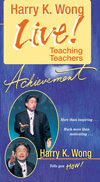
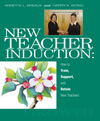
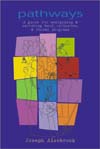


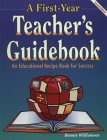
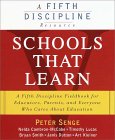

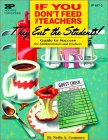
 Effective
Teaching...
Effective
Teaching...